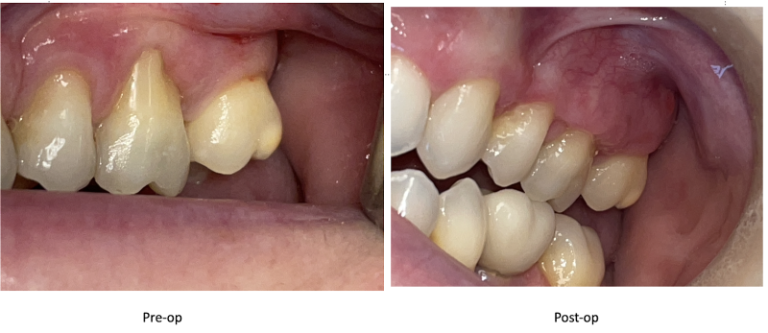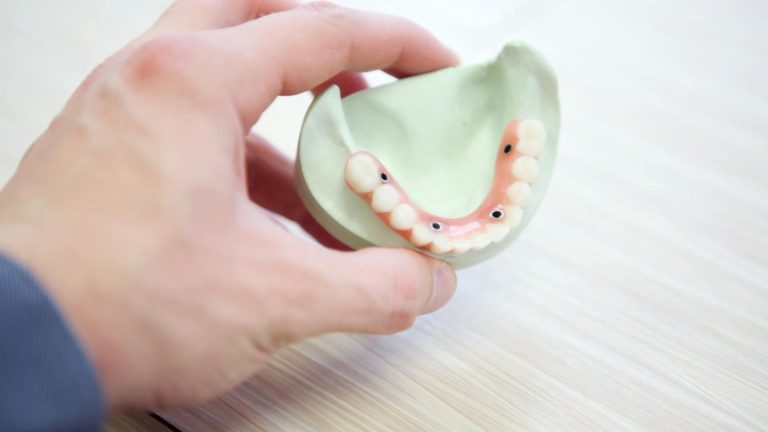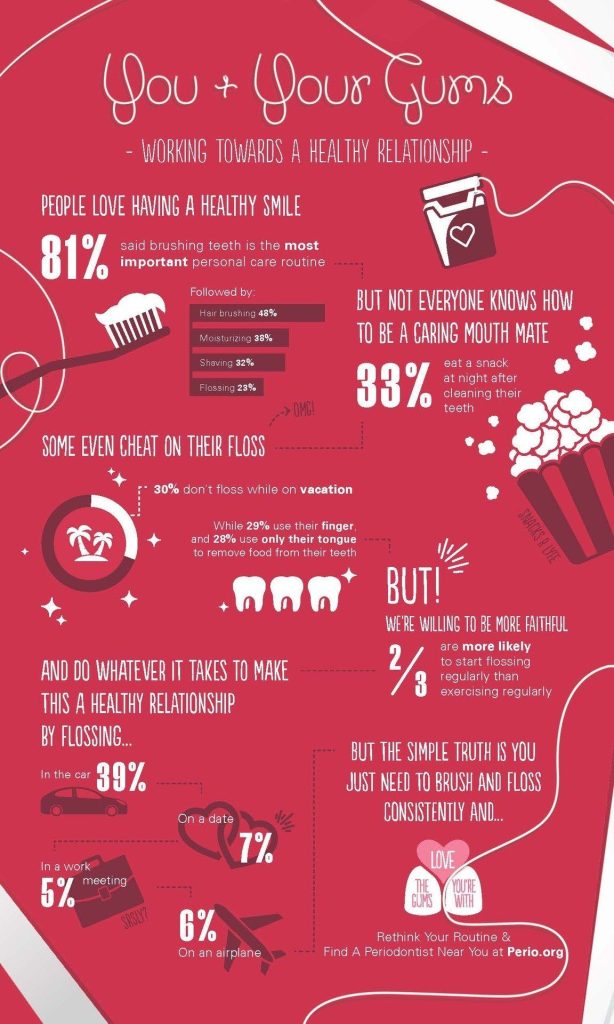A gum graft can cover exposed roots and restore gum tissue that has been lost to periodontal disease and other factors. Drs. Tatch, Smith, & Termini may recommend gum grafting to protect your teeth, improve your oral health, and enhance your smile. To learn more about gum grafts call 847-623-5915 and arrange an appointment with us today.
If your smile is affected by periodontal disease, you may have noticed that your gum line has receded, making your teeth appear longer than usual, or have experienced increased tooth sensitivity. Gum tissue recession may also be caused by overaggressive tooth brushing, insufficient dental care, genetic factors, tobacco product use, grinding and clenching your teeth, hormonal changes, or crooked teeth.
As the gum tissue recedes, disease-causing bacteria can easily accumulate and damage your teeth and bone structure, leading to possible tooth loss. To treat gingival recession, Drs. Tatch, Smith, & Termini may recommend a soft tissue graft procedure. There are different types of grafting procedures, and the purpose of these procedures is to restore healthy tissue or arrest further tissue loss. Many times, we can avoid using your own tissue and to use other materials instead. To learn which procedure will best restore your tissue health, please contact us to schedule a visit.

- Chronic periodontitis, which often progresses slowly is the most common form and is most prevalent in adults
- Aggressive periodontitis, which is characterized by rapid detachment of gums to teeth and rapid bone loss. This form is likely to appear in smokers and in those with a family history of periodontitis
- Necrotizing periodontal disease in which necrosis(the death of tissue) affects gums, bone tissue, and the fiber connecting teeth to the bone. This extremely rare form of periodontitis is prevalent in those who suffer from human immunodeficiency virus (HIV), immunosuppression, or malnutrition. In some cases, periodontitis is associated with systemic disease affecting other parts of the body. Conditions like diabetes are associated with this form of periodontal disease.
Oral Hygiene: The first step to preventing periodontal disease is by brushing at least twice a day and flossing once a day to remove plaque and debris from between the teeth and below the gum line as a part of a daily oral health routine.
Diet: Foods rich in omega-3 fatty acids―including oily cold -water fish (salmon, tuna, herring, or sardines) and walnuts―have been found to reduce inflammation. The body does not produce these acids naturally, and they can come only from consuming certain foods. Additionally, antioxidant-rich green tea has been shown to reduce inflammation in the body.
Exercise: People who exercise regularly demonstrate fewer incidences of periodontal disease than those who do not exercise regularly. While moderate exercise may help reduce inflammation in your body, extreme exercise (such as marathon running) can actually increase systemic inflammation. Exercise also reduces stress, another risk factor for periodontal disease. Stress has a negative impact on the body’s ability to fight infection and inflammation.
The AAP also recommends that all adults receive a comprehensive periodontal evaluation annually.
Age: Adults age 65 and over have higher incidences of periodontal disease, according to data from the Centers for Disease Control and Prevention 65 percent of adults between the ages of 65 and 79 have some form of periodontal disease.
Medications: Some drugs (such as oral contraceptives, anti- depressants, and certain heart medicines) can affect your periodontal health. Certain drugs can reduce the flow of saliva. Without adequate saliva production, the mouth can become a breeding ground for bacteria.
Tobacco Use: Tobacco use is linked with many serious illnesses (including cancer, lung disease, and cardiovascular disease) as well as numerous other health problems. Users of cigarettes and chewing tobacco are at an increased risk of periodontal disease. Tobacco use is said to be one of the most significant risk factors in the development and progression of periodontal disease. The detection of periodontal disease is often more difficult in tobacco users. This is because the nicotine and other chemicals found in tobacco products can hide the symptoms commonly associated with periodontal disease, such as bleeding gums. As such, necessary treatment is often delayed, allowing the disease to advance in severity.
What is a Comprehensive Periodontal Evaluation? A CPE assesses your risk of periodontal disease and determines the right types of treatment if periodontal disease is diagnosed.
Teeth: Your dental professional will evaluate each tooth as well as dental fillings, implants, crowns, or other types of restoration. The position of the teeth and their closeness to each other will be noted.
Bite: The evaluation will include a check of the way your teeth come together when your mouth is closed, also known as occlusion or bite. Your dental professional will look for moving or loose teeth, which can be a sign of periodontal disease.
Plaque and Tartar Buildup: The amount and location of bacterial plaque and tartar will be assessed.
Gums: A dental probe will be inserted into the spaces between your teeth and gums to see how well your
gums attach to your teeth. Any inflammation or bleeding that occurs during the probing process is documented.
Bone Structure: X-rays may be taken to evaluate the quality of the bone in your upper and lower jaw and to determine if any bone loss has occurred.
Risk Factors: Your dental professional will ask about a number of periodontal disease risk factors, including age, tobacco use, family history of periodontal disease, or if you have another systemic condition that may be linked to periodontal disease, such as heart disease or diabetes.
TREATMENT OF PERIODONTITS
PERIODONTAL PLASTIC SURGERY

- Risk factors such as genetics or tobacco use
- Severity of periodontal disease
- Severity of bone loss
- Overall general health
- At-home oral hygiene



